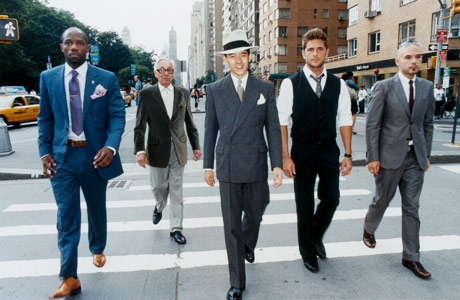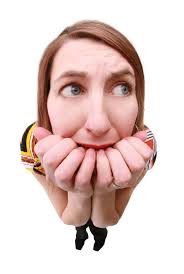
Daniel Poulin, Accor’s NCA LGBTQ+ Pillar lead shares his thoughts on how to effect change in Diversity and Inclusion.
Most people would agree that hospitality is behind other industries when it comes to diversity and inclusion.(D&I) Read More


Daniel Poulin, Accor’s NCA LGBTQ+ Pillar lead shares his thoughts on how to effect change in Diversity and Inclusion.
Most people would agree that hospitality is behind other industries when it comes to diversity and inclusion.(D&I) Read More

Doug Chambers, founder/principal of Blu Spas, Inc. stated “A key to understanding the male skin care market is to understand that customization is just as relevant to the male market as it is to the female market. All too often spa menus feature multiple facial options unmistakably crafted for women and a single one-size-fits-all facial for men.”
One way to begin that process is to identify which products among your retail selection are ideal for men. But with the wide range of products now available specifically suited to men’s needs, there is no longer an excuse for not having a section of your spa menu and products dedicated to the the fellas.
Read the complete article- 4 Strategies to Capture the Men’s Skin Care Market http://bit.ly/1Qi8Bbr

Social media and news outlets are bringing us closer together minute by minute. Air travel is faster and more frequent; most areas of the world can be accessed within 24 hours. Opportunities to conduct business with a global clientele are increasing exponentially. So what can spa therapists do to help build a brand which attracts and maintains the attention of treatment lovers from around the world?
What’s guaranteed to work every time and garner rave reviews on social media sites? Check this out-
Smile. A smile is a universal welcoming signal that crosses all boundaries and immediately puts your client at ease. Further engagement with the guest is mandatory and serves to benefit the therapist as well so make sure that the charm is dialed on high.
Interview your client. Use that intake form to begin your conversation.with your client. Everyone’s situation and reason for visiting the spa is different. Give men the same amount of time and respect for discussion as women, their needs are often just as pressing. Don’t assume anything, ask questions and listen well.
Don’t categorize your clients. When it comes to skin and body care, knowledge of the Fitzpatrick Classification Scale is not enough. Multi-ethnicity is everywhere and creates some very interesting characteristics that probably weren’t covered in your massage or aesthetics classes. Gather as much information as possible, this will help to ensure great service.
Make the client comfortable. People come in all shapes and sizes. Have a plan in case a plus sized or small person walks into your spa. Be sensitive to the hairstyles of your clients. If she (or he) has a lot of hair offer her two headbands rather than one. Don’t assume that the hair is all hers. Ask if its OK before plunging your hands into someone’s mane to perform a head massage. If you are performing facial services on a bald man give his head some love too. It’s exposed to the sun and needs care.
Cleanse, remove and check. When I worked as a makeup artist for a spa, I would frequently have to remove leftover makeup from my client’s neck or traces of masque from their nostrils, post facial. If a man has facial hair, masque may cling to his face. Check your clients in the daylight before sending them back out in public. They’ll appreciate your attentiveness.
Use your loupe. Don’t trust your lying eyes. Examine the skin closely under a magnifying lamp and report your findings to your client.
Be gentle. You will never go wrong if you treat all skin with respect. There is a commonly held belief that darker skin tones can tolerate more aggressive products. The opposite is true. Here’s the rule of thumb: If you are causing pain to your client, you are probably causing damage. This will get your name on social media quickly but not in a good way.
Avoid extractions. A good practice is to focus on providing clients with skin that is polished, luminous and smooth to the touch. No one on vacation wants their skin to look damaged. If your client returns to you often, you can then create a schedule for deep cleaning and extractions.
Make product recommendations Almost no one travels a distance and gets a treatment to not take something home with them. Therapists have problems selling because they fail to initially engage with their client. If you have a product that you really believe in or that worked incredibly well during treatment share the knowledge with your client. Recommend that they buy another for gifting, especially if it’s unique to your spa.
Make care recommendations One of the ways to show true interest in your client is a final written recommendation for body and skin treatments once they return home. Create a three month schedule for them to follow, include a sentiment thanking them for visiting the spa. Send it to their email address. They will appreciate the reminder to take care of themselves and likely follow your expert advice.

I am based in Asia however it seems that when it comes to the spa industry in general, “don’t ask don’t tell” is the policy that folks often operate from. I had a massage the other day at a Five-Star hotel in my neighborhood. It was serviceable enough and I left feeling better. It was everything else that happened around the service which made the hair on the back of my neck stand up. Read More

Working at a spa may be a life calling for many of us but that doesn’t make it lucrative. When I began working in the spa industry as a therapist I saw a serious deficit in my finances. Transitioning from a management position at a Fortune 500 company was a huge change. In the past, I’d had the ability to pay off monthly bills, take two vacations per year, and save a substantial amount in my 401K and bank account. But the trade-off was well worth it. I no longer suffered from daily migraines and high blood pressure. When I left my corporate job I didn’t look back. Not once.
I never saw making money and helping people as mutually exclusive. Early on in my position as a therapist, I realized that I still wanted to take nice vacations. I’d grown used to having them and saw no reason to eliminate them from my list of things to look forward to. I’d simply have to find a way to earn money beyond the compensation of the spa services listed on my daily activity schedule.
I had noticed that the spa receptionists tended to book the most basic, least expensive treatments. To increase my earnings I only had to up-sell those services and sell our retail products to realize a much healthier paycheck.
I started by listing the top five basic treatments-these were the ones most frequently booked. On the same sheet of paper, I listed their upgraded versions and the benefits of each. I viewed them through my customer’s eyes; why would I shell out an extra $25, $50 or $75 dollars? Was it really justified? The answer was yes. The upgraded treatments were far superior. They were more effective and luxurious. Many of them were longer. For most clients, the additional time was a plus. I decided that unless a customer was adamant about the treatment they had booked, I would recommend an upgrade to everyone. I also made it a point to schedule the treatments for myself. That way I could make my recommendations based upon personal experience.
Almost everyone accepted the upgrade. I discovered that most people just want what is best and the difference in cost doesn’t really matter to them. If you explain how they will benefit they are more than willing to defer to your expert judgement.
By up-selling my client from a basic $95 treatment to one that costs $150-$165 I was generating much more revenue. The additional commission from related retail products I sold was also making a difference in my earnings.
Buoyed by my success, I began cross-selling services in other departments to my clients as well. After all, if I’m performing a hydrating body wrap, why not suggest that they care for their feet as well with a spa pedicure? If I felt shoulder or neck tightness during a facial I would recommend a massage. My clients would ask me to book them with other technicians that I felt would be a good match for their personality. People enjoy having a their own “glam squad” and their return visits ensured everyone’s job security.
Interestingly, once cross-selling between therapists begins it becomes viral. It’s a feel good activity that promotes teamwork, greater client satisfaction and higher revenues for all. Therapists tend to be some of the most giving people in the world but perhaps taking the step to identify our financial WIFM, (what’s in it for me) would have benefits for all.

Update: I was contacted by TripAdvisor’s Senior Manager of Public Relations who informed me that they do have a section on their website under the category of Spa & Wellness. There you can post your reviews for day spas. They do not have a platform specifically for hotel or resort spas. Thank you to TripAdvisor for their responsiveness to their social media audience and willingness to discuss this issue further.
I’m a huge fan of TripAdvisor. It would never cross my mind to make a reservation for a hotel or restaurant without first checking my favorite source of information. And I write reviews as well; I figure that’s the least I can do for my fellow travelers. I was informed by TripAdvisor that I’m in the top 4% of their reviewers with over 19,012 readers. That’s a lot of people.
n 2013 “global wellness tourism” generated 494 billion dollars and “spa” singularly generated 94 billion dollars in revenue. In the U.S. alone from 2008-2013, 124 million people visited a spa. It is one of the fastest growing and most profitable industries in the world. Why is the service paying public not being asked to weigh in on their collective experiences?….
This article was published on Huffington Post. Want to read more? Click here>>> http://huff.to/1NIGG25

Most therapists enter the spa industry with the idea of providing service, helping or healing. The problem with retail sales training is that more often than not, the service component is not emphasized.
The view that retail is a customer service component and not the cumbersome additional task many therapists see it as, is one that is shared by Lorna Macleod, spa manager at Ribby Hall Village in Lancashire. “I always say to the therapists, don’t look at retail as a negative, look at it as a positive.
If you went to the doctor with a sore throat and the doctor didn’t give you anything for it, you’d feel cheated and I think it’s the same with spas,” she says. “We need to give customers something to take home that enables them to continue the benefits they see and the great feeling they have when they’re in the spa. If we don’t do that then we, as therapists, are not doing our jobs properly, we’re not fulfilling the clients’ needs and concerns.”
The problem, Macleod continues, is that therapists are afraid of retailing. “All therapists are frightened of retail because they feel as if they’re asking something where they’ll get a no back and no-one likes rejection,” she says. Gill Morris, director of training and consultancy provider GMT Training, which offers courses in areas that include sales training for spa and beauty therapists, agrees.
“Therapists are frightened to death of selling and that’s because they don’t know how to do it,” she says. “Education for therapists focuses very much on treatment, so they actually don’t know how to sell and don’t feel comfortable with the process of selling. That’s because they haven’t been taught it and if you haven’t been taught something, you don’t know how to do it.”
While many spas offer retail bonuses and incentive these, Morris explains, will have no effect if the skills required to push sales are not there to begin with. And while brands may be excellent at providing product training, product knowledge alone is not sufficient
Excerpted from Professional Spa and Wellness June issue “Selling the Sales Pitch”